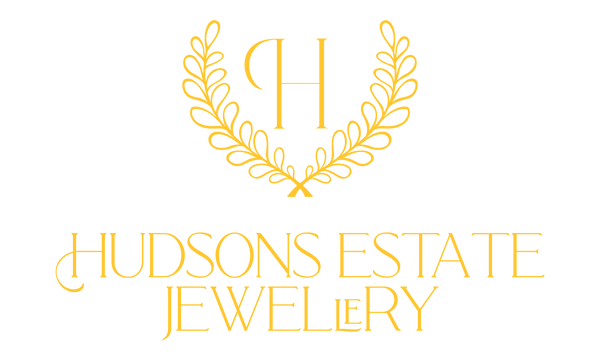Born from the austerity and limitations of World War II, the Retro Era introduced a dramatic, oversized style. This jewellery is a testament to resilience and creativity, using new materials and a bold aesthetic to create a sense of glamour and hope in a difficult time. Retro pieces are a unique find and a perfect example of a style born out of necessity.
Historical Influences
The scarcity of precious materials during World War II was the single biggest influence on the Retro era. The unavailability of platinum, which was deemed a strategic military resource, forced jewellers to be creative with gold. This led to a new focus on its warmth and texture, and an increased availability of gold in the Americas led to a warmer colour palette becoming fashionable.
Hollywood glamour also played a major role, with stars like Rita Hayworth and Veronica Lake wearing large, dramatic jewels that inspired the public and provided a sense of escapism. Jewellery houses like Cartier and Van Cleef & Arpels moved their production to New York, and the American market became the new centre of innovation.
Key Characteristics
Retro jewellery is known for its large, sculptural forms and a distinctive use of rose gold. Due to wartime restrictions, a warmer colour palette became fashionable. Jewellers experimented with different gold alloys to create rich, varied hues, including the signature rose, yellow, and green golds, often combined in a single piece. Pieces are often bold and three-dimensional, with chunky links and ribbon-like motifs.
Because precious gemstones were hard to come by, large, affordable, semi-precious stones became incredibly popular. Synthetic rubies and sapphires, a technological advancement of the time, were widely used, as were large aquamarines, citrines, and amethysts. These vibrant stones provided a splash of much-needed colour and optimism.
The jewellery of this era was also incredibly versatile, with pieces often converting from a brooch to a pendant or from a bracelet to a clip. This reflected a desire for practical luxury. The designs were meant to be impactful, often featuring asymmetrical swirls and stylized bows that gave the jewellery a sense of dynamic movement.
What to Look For
When searching for a Retro piece, look for the signature rose gold alloy, which gained immense popularity during this period and is a strong indicator of a piece’s origin. The designs will be bold and sculptural, often featuring asymmetrical ribbon and scroll motifs. Pay close attention to the stones. Many pieces use synthetic rubies and sapphires, which were a technological advancement of the time, so their presence does not necessarily indicate a fake.
You will also see large, affordable gems like citrine and aquamarine, which were often used to create a look of luxury without a high cost. A key educational clue is to look for the substantial, heavy feel of the gold and the use of unique links, such as the "gas pipe" chain, that are characteristic of this era's larger scale.
Given the materials used, these pieces are often in excellent condition. However, it's always wise to check for any signs of repair or wear on the links and clasps. Look for hallmarks and maker's marks, as many pieces from this era were produced by well-known houses and are highly sought after by collectors.
Dare to be bold? Explore our collection of striking Retro jewellery and find a piece that embodies style and resilience.
